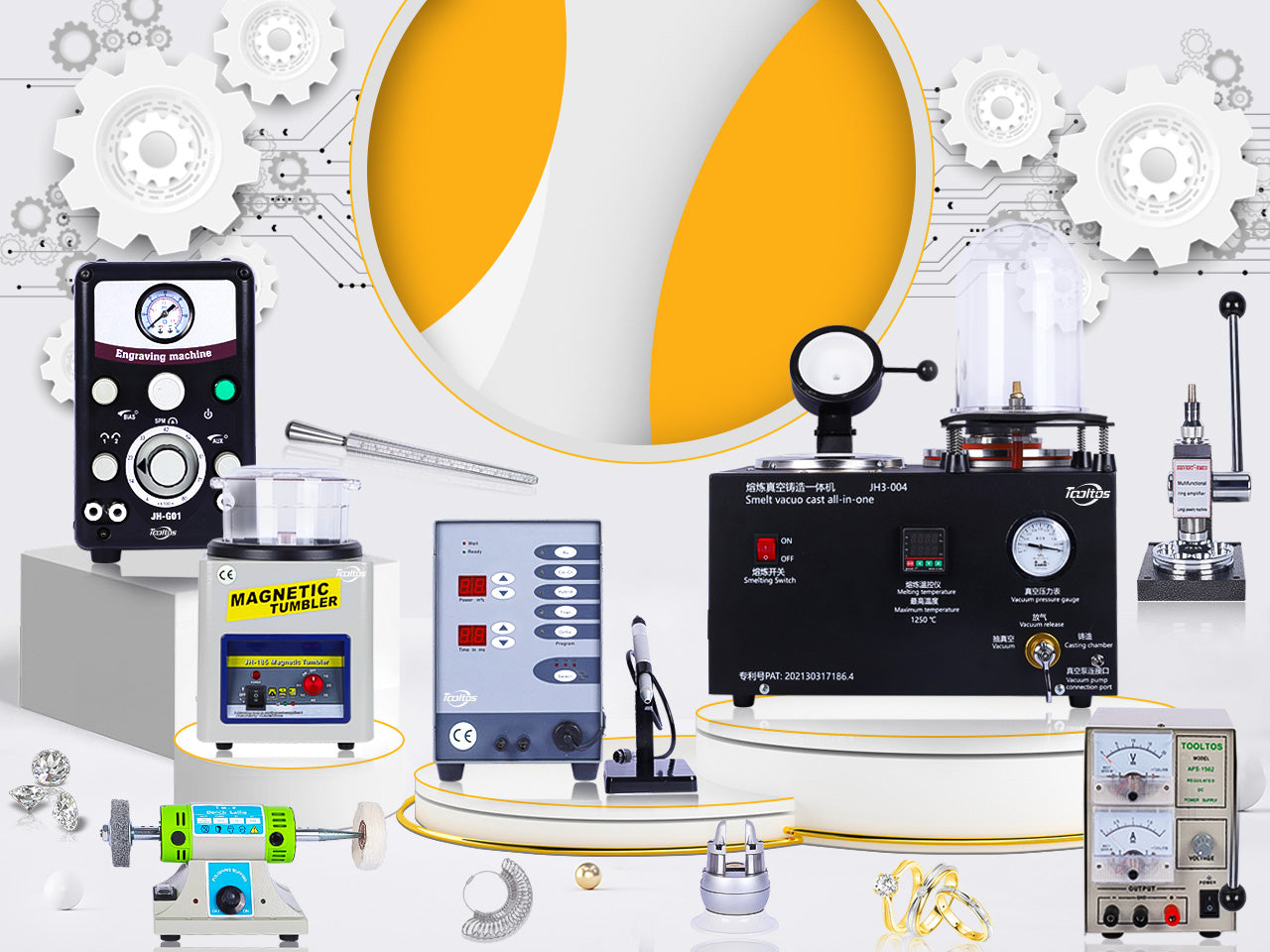Polishing is a crucial step in jewelry making, enhancing both the appearance and value of your pieces. Achieving a professional finish requires understanding various techniques, tools, and materials. This guide provides insights into professional jewelry polishing to help you attain a flawless shine.
Understanding Jewelry Polishing
Polishing involves smoothing the surface of metal to remove imperfections, scratches, and oxidation, resulting in a reflective, high-gloss finish. This process not only enhances visual appeal but also prepares the piece for any additional treatments or settings.
Essential Tools and Materials
-
Polishing Cloths: Specialized cloths embedded with micro-abrasives suitable for light polishing and maintaining shine.
-
Abrasive Materials: Sandpapers or emery papers in varying grits (from coarse to fine) are used to smooth surfaces and remove deeper scratches.
-
Polishing Compounds: Substances like tripoli (for cutting) and rouge (for coloring) applied with buffs to achieve desired finishes.
-
Rotary Tools and Buffing Machines: Equipment such as Dremel tools or bench-mounted polishing motors equipped with various buffs and wheels for efficient polishing.
-
Ultrasonic Cleaners: Devices that use ultrasonic waves and cleaning solutions to remove debris from intricate designs before polishing.
Step-by-Step Polishing Process
-
Cleaning: Begin by thoroughly cleaning the jewelry piece to remove dirt, oils, and residues. Use warm water with mild dish soap and a soft brush, then rinse and dry completely.
-
Surface Preparation: Assess the piece for scratches or irregularities. Use appropriate grit sandpaper to smooth out imperfections, progressing from coarser to finer grits.
-
Initial Polishing (Cutting): Apply a cutting compound like tripoli to a firm buffing wheel. Polish the piece to remove minor scratches and achieve a uniform surface. Keep the piece moving to avoid excessive heat buildup.
-
Final Polishing (Coloring): Switch to a softer buffing wheel and apply a polishing compound such as rouge. This step brings out the metal's luster and provides a mirror-like finish.
-
Cleaning Post-Polishing: Remove any residual polishing compound using an ultrasonic cleaner or by hand with a soft cloth and appropriate cleaning solution.
Tips for Achieving a Professional Finish
-
Consistent Pressure: Apply even pressure during polishing to avoid uneven surfaces or gouges.
-
Tool Maintenance: Regularly clean and condition polishing wheels and buffs to prevent contamination and achieve consistent results.
-
Protective Measures: Wear appropriate safety gear, including eye protection and masks, to guard against dust and debris.
-
Heat Management: Monitor the temperature of the piece during polishing to prevent damage or discoloration from excessive heat.
Advanced Polishing Techniques
-
Electrolytic Polishing: Utilizes an electrolytic solution and electric current to remove tarnish and achieve a high shine, especially useful for delicate items.
-
Abrasive Blasting: Employs fine abrasive materials propelled at high speeds to clean and polish jewelry without compromising intricate details.
-
Barrel Polishing: Involves tumbling jewelry pieces with polishing media to achieve a uniform finish, suitable for bulk processing of smaller items.
Common Polishing Challenges and Solutions
-
Surface Scratches: Ensure thorough sanding with progressively finer grits before polishing to eliminate scratches.
-
Residue Buildup: Regularly clean polishing tools and the workpiece to prevent compound accumulation that can dull the finish.
-
Maintaining Detail: Use appropriate tools and techniques to preserve fine details, especially when polishing intricate designs.
Mastering professional jewelry polishing enhances the quality and appeal of your creations. By selecting the right tools, employing proper techniques, and paying attention to detail, you can achieve a brilliant finish that showcases the craftsmanship of each piece.


0 Kommentare